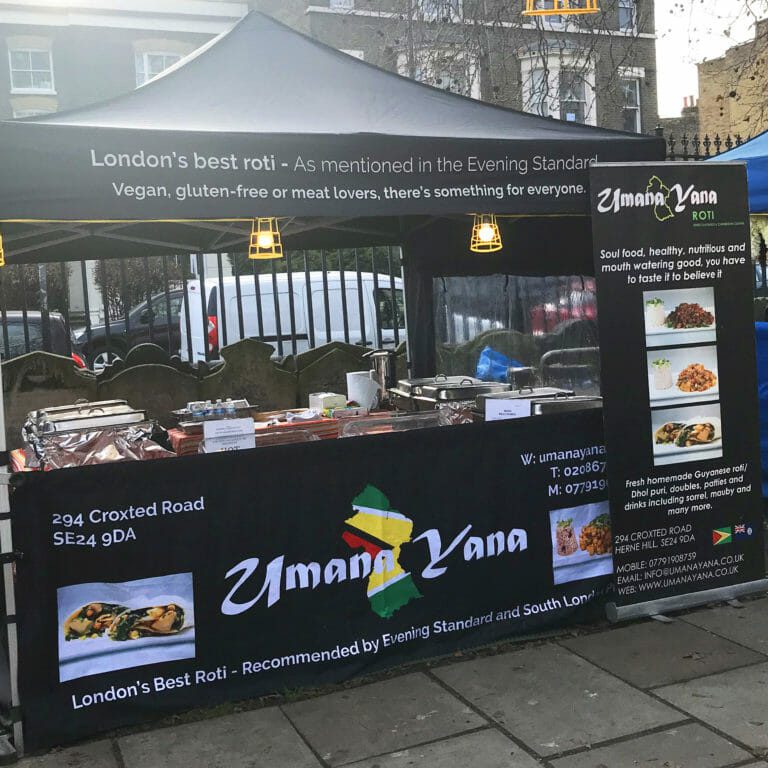How To Start A Catering Business

Do you love to cook and want to turn your passion into your profession? Opening a catering business is a great way to do so, but with so many things to consider taking the first step can be hard…
What type of catering business do you plan to set-up? Would you work from home or from a van? How much competition is there for your idea? How could you finance it? How would you market it? Would you form any business partnerships?
Before establishing a catering business, it’s a good idea to answer these questions. Fortunately, we’ve created this helpful guide to assist you in getting your business started.
Choose a type of catering business
So you’re planning on opening up a catering business – congratulations! However, before you do so it’s important to carve out a niche that best suits your skill set and goals. The term ‘catering business’ can describe a wide array of businesses, both in terms of service offering and size.
Home Catering
One of the most common ways to open a catering business is to do so from the comfort of your own home. By using the resources already at your disposal (namely a physical location with cooking capabilities), you can keep your overheads low while you get your business off the ground.
You can start small, managing the food single-handedly or with the help of a small team. This is a recommendable place to start, as it allows you to see if running a catering business is something you truly want to do.
Home catering is a great option for amateur chefs who love to cook for others, as they’ll likely already have a broad range of kitchen equipment to prepare and cook food. Refrigerators, ovens, hobs and food preparation equipment are all common in the kitchens of food-enthusiasts, so the business can start selling while keeping costs low.
Pros and Cons of a Home Catering Business
| Pros
| Cons
|
| Little to no barriers to entry – little/no overheads (rent, equipment, staff) | Can be a big commitment, with you being in charge of making, delivering and marketing the food. |
| Flexibility – you can start part-time to fit your business around you, before expanding to full-time once you can hire more people to help. | A home catering business has to follow strict food hygiene regulations and receive random food inspections, which can be disrupting for a family life. There are also strict restrictions on pets. |
Van Catering
Interested in catering but prefer to not do so from home? Then why not try mobile catering? Street food has exploded in popularity in recent years, with mobile food vans now at most outdoor events.
Starting a catering van business is a more expensive option than home catering, but provides some real benefits, including manoeuvrability, set-up speed and breadth of events. A street food catering business can work at anything from a music festival, an outdoor corporate event or even a wedding.
Despite being weather-dependent and competitive, anyone with the resources to buy a van can theoretically enter the market, earn a reputation and bring in clients. Whether it’s a full-time stall on a permanent market or a food truck for certain events, mobile catering could be the ideal business model for you.
Pros and Cons of a Van Catering Business
| Pros | Cons |
| Variety of events opportunities (street markets, weddings, music festivals, corporate events) | More expensive than a home catering business (motorised vans will cost anything between £6,000 and £100,000) |
| Set up speed – you can drive, park and start serving straight away. It’s also a very easy unit to clean at the end of the event. | Limited space – this impacts the number of staff you can operate with, the amount of stock you can carry and the amount of food you can provide |
Gazebo Catering

If you’re interested in mobile catering but don’t like the sound of a van, why not try a gazebo catering business? Gazebo stalls are the perfect shelters to run a mobile catering business due to their size, scalability and low-cost. A catering gazebo is also great for highlighting your products and stand out at catering or hospitality events and the gazebo bar set is great for dual usage.
Similarly to van catering, running your food business from a stall allows you to work at a wide variety of events, in good weather and bad. From weddings to local village markets, gazebos are perfectly suitable for showing off your tasty produce and get to know your potential customers.
Pros and Cons of a Gazebo Catering Business
| Pros | Cons |
| Variety of events opportunities (street markets, weddings, music festivals, corporate events) | Durability – some gazebos are not built for all-weather conditions, which is why it’s worth investing in a heavy-duty gazebo. |
| Low cost – a brand new durable gazebo can cost as little as £170, making it a very cost effective way of establishing your mobile catering business. | Set-up – setting up a gazebo and taking it down can be more time intensive than a van. |
| Space – you want to sell your produce to as many people as possible, and gazebos give you more space to expand, hire staff and engage with your customers. |
Analyse the competition
Once you identify the type of catering business that you want to set up, it’s time to analyse the competition. Research what similar businesses have done to diversify their offering, the types of clients they have and their rates, paying specific attention to the competition in your local area.
It’s unlikely that your business will be unique in its service offering, so it’s important to clearly communicate to potential clients why they should choose you ahead of a competitor. Is it the quality of food you offer? Is it the price? Can you offer partnership deals? What relationships do you already have that you can leverage to get a good start?
Set up your business structure
Before selling your food to clients, it’s important to find out what you need to do to operate your food business legally. For example, it is a legal requirement to register your business with the Environmental Health Department prior to trading. This registration takes place at your local authority, who will inspect your premises in the first three months of trading to ensure that you are trading legally and safely.
You’ll also need to name the business before receiving the necessary licenses. For example, there are specific street trading licences if you trade on public streets or roadsides.
It’s equally important to get the right legal & tax structure for the business. Options include:
– Limited Company
– Limited Liability Partnership
– Partnership
– Sole Trader
Moreover, anyone working in the kitchen of your catering business must legally receive training in food hygiene and food safety. For the full legal checklist on opening a catering business, check out the Nationwide Caterers Association website.
Make a business plan
Your business plan should outline the type of food you plan to serve and which events you wish to target over the next 3, 6 and 12 months. It should also include target demographics and sales targets, including worst and best case revenue targets.
When it comes to choosing the type of food you decide to make, this is largely dictated by the type of event you want to work at.
– Private – birthdays, anniversaries, weddings
– Corporate – office parties, award ceremonies, networking events
In terms of how food is served to customers, there are four main types:
– Buffet – food is left on the side for guests to help themselves
– Drop-off – food is pre-prepared and delivered to the client. No additional service is provided.
– Full-service – the catering business helps with the entire event, from set up and cooking to service and cleaning.
– Wave service – a team of servers gives plates of food to customers, before clearing the tables at the end of the meal.
You can also specialise in a type of cuisine, such as patisseries or Mexican food, or you can choose to keep it general. In any case, the type of food you make should then inform your branding and marketing.
For example, you may choose to serve high-end, vegan-friendly BBQ food, in which case your bywords should be ‘inclusive’ and ‘healthy’. You may then want to target niche music festivals with a younger demographic or corporate events with an environmental focus, as these are events where your target demographic is most likely to be found.
Alternatively, you may plan to serve low-cost fast food, in which case your byword could be ‘cost-effective’ and ‘efficient’. This business plan would need you to serve as many customers as possible in the shortest amount of time to keep profitability high and cover your small margins. Large festivals and weddings are the type of events with the right turnover in customers for this model.
Market your business
You should take the time to work on creating a strong brand that your customers will engage with. Not only is this important for appearing like a professional outfit to event organisers, it also attracts new customers who will remember you and hire your services in the future.
Social media should be a key platform to engage with your audience, and good photography of the food you sell should be actively shared across platforms such as Facebook, Instagram and LinkedIn. Having a general digital marketing strategy in place is a good idea, especially given the long-term benefits of investing in activities like SEO and PPC.
Don’t forget more traditional marketing activities either. Leaving branded flyers at events or getting a custom print for your gazebo or van is a quick, cheap and effective way of growing your brand’s presence in the industry.
Time to get started

Setting up a catering business can seem daunting at first, but with the right preparation it can become the profitable venture of your dreams. By focusing on a type of catering, analysing your competitors, setting up a business structure, making a business plan and marketing your services, you’ll be ready to head out and start serving your food to the world!




